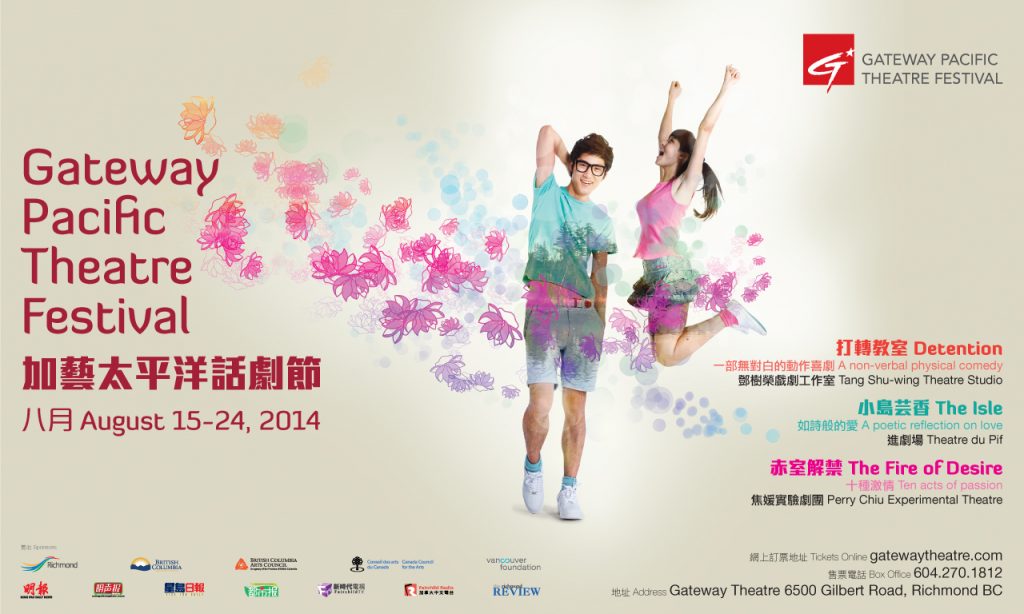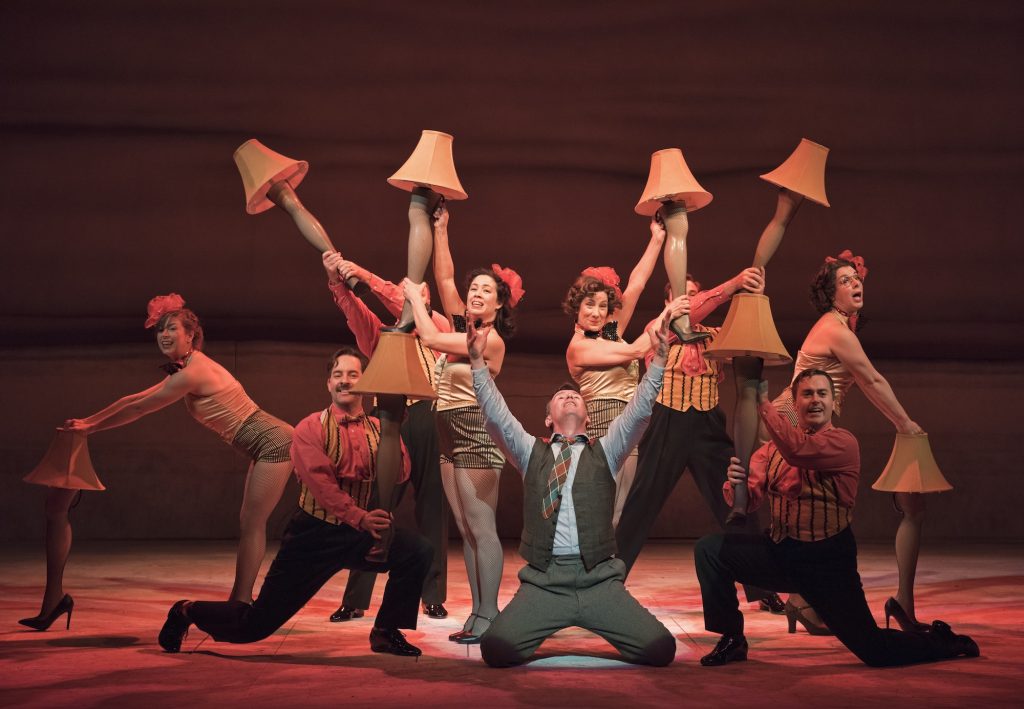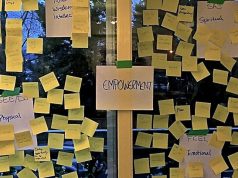
This needs to be said before we can get into it: I am a white woman of immense artistic privilege.
For 10 years, I have worked in large regional theatres as an artistic programmer, dramaturg, and publicist. I select stories for the stage, shape those stories, and craft the communications strategies of those stories selected for those stages. Just writing that sentence gives me White Girl Guilt; a neurosis that stems from my hyper-awareness of the limited access to that power. I’m tempted to reinforce why I earned those jobs, but I won’t because that’s the exact reaction that prevents us from doing the work.
Theatre’s fundamental purpose is to share stories that connect us. Artist to artist, artist to audience, human to human. So shouldn’t it be the responsibility of arts makers, producers, and advocates to ensure all human stories and sensibilities are included in our practice? Of course it should, but we often fail at this because our fears and egos get in the way. And while it’s vital to hire more non-caucasian arts producers in our theatres, I would argue that us White Girls (who occupy the majority of arts administration jobs) can make great changes right now by getting over our privilege guilt and doing our fucking jobs.
Here are the ways I’ve seen, felt, and dealt with my own White Girl Guilt and made stronger, more inclusive artistic choices with my colleagues that reflect the perspectives and needs of all our artists.
When Otherness Isn’t Funny: A Christmas Story, The Musical – Arts Club Theatre Company
The comedy of characters’ perceived racial difference is delicate. Minimize the sentiment and it’s not funny. Go heavy-handed and it’s offensive. So when director Valerie Easton staged the restaurant scene in the Arts Club’s 2015 production of this super-campy musical, we went full throttle: the Asian waiter had a fu manchu and thick accent that seemed to suit the scale of the zany show.
Then we got a letter from a subscriber and artist who carefully deconstructed that scene’s meaning and impact on her. The private letter was then publicly shared on Facebook, where it was liked by more than 80 people within hours, with a fast-growing comments feed rallying behind the letter’s sentiments. I emailed my marketing, artistic, and senior leadership team at 10pm with the subject line: URGENT.
By 9am the next day, Artistic Managing Director Bill Millerd was already on it. He read the letter, called Valerie, and requested that I withhold our public response until they decided what to do with the scene. After reconsidering the artistic choices based on the subscriber’s feedback, Bill wrote to the patron, acknowledged that these choices could cause offense, noted the changes made (fu manchu cut, accent flattened), and thanked them for their input on the work. I also asked the patron to close the loop on social media by sharing the update, which she gladly did, and the comments feed celebrated her for being a catalyst of change.
Rewind to me watching dress rehearsal, where I wondered if the scene was offensive. Knowing our creative team meant no harm, I assumed the bold choices weren’t landing, comically (“Surely the scene’s intention is ironic, they just need time to play with it”). I also doubted my role in the production (“You’re the publicist; you’re not on the artistic team, so don’t overstep your bounds”). I was also very new to the job and didn’t want to overstep any boundaries (“You’ve only been here a month. Don’t offend people with your pokey questions”).
My own White Girl-ness of maintaining my place and not raising doubts held me back from doing my fucking job. Because when I read the subscriber’s complaint letter, I had intense artistic shame, thinking, “I could have prevented this.” Rather than partnering with my AD in a moment of doubt, I wound up partnering with him on a crisis of perception (which is much worse). Huge lesson learned.

The Politics of Bilingualism in New Canadian Programming – Gateway Theatre
In 2014, Gateway Theatre Artistic Director Jovanni Sy implemented his new vision for the organization: the Gateway Pacific Theatre Festival would present Hong Kong plays performed in Cantonese with English surtitles. While Kelly Nestruck asked his Globe and Mail readers the immense artistic question, “Has Jovanni Sy solved the biggest problem facing Canada’s theatre establishment – what to do about shrinking (white) audiences in a growing (multicoloured) Canada?”, Jovanni and I were hung up on the nitty gritty practical follow-up conundrum: “how do you get this potential audience into the Gateway without alienating the established audience?”
The shows were surtitled, so the problem wasn’t accessibility of understanding the work. The challenges were with the surrounding communications strategies and the politics of bilingual signage. A hot topic in Richmond, particularly at that time, due to a silent divide between the Caucasian and Asian communities. Jovanni wanted to close the gap, so we needed to wield our words in inclusive ways. Since the festival is primarily for a Cantonese-speaking audience and accessible to those who speak English, the communications materials needed to reflect that relationship to access.
Decision: copy written primarily in Cantonese with English translations. With Cantonese-speakers being the primary demographic, the communications team also reached out to Cantonese-speaking vendors, community partners, and media; heeding their advice on effective methods of communication and connection; and learning what motivates that community. In short: we served that demographic by putting them first.
Initially, it made me uncomfortable. Richmond was a city where I already felt like the Other and the festival reinforced that my Caucasian cultural perspective and language would not come first at the theatre where I worked. How often does that happen in Canadian regional theatres? Never. How awesome that it finally did.
I became aware that People Like Me (white) were no longer the central demographic driving artistic decisions. That flip in power was humbling, and necessary, because for the first time I was able to see the People Like Me were not white, they were ALL theatre lovers who simply wanted to connect with a show that brought them a little closer to their truth.
Strategies vs. Solutions – Speaking Up in all Rooms
If you are an arts marketer on a job interview, you will inevitably be asked how you plan to reach diverse audiences, which is great. It means the leadership team is keen to make change. How brave you are about addressing the magnitude of change necessary is entirely up to you.
When I was recently asked this question, I replied, “I wouldn’t simply program one ‘diverse’ story a season, participate in the community outreach, and pretend like we’ve solved the problem.” This statement simultaneously raised eyebrows and guffaws of approval; the room was delightfully surprised that I had placed blame not just the marketing teams as a demographic-seeking tactic, but demonstrated that it was an entire organization’s responsibility to uphold diversity.
If you’re thinking I said this confidently, you’re wrong. I honestly believed I ran my mouth and blew my chance. I left the interview stewing over the successful strategies I’ve used in the past; all examples I could have cited to get the gig. But then my gut kicked in and said that wasn’t the truth, because the tactics are only temporary solutions (sell the show) and don’t address the problem (how theatre can be more inclusive).
So how about we commit to real change instead of reinforcing perceived notions of success? What if we make a ruckus in any room, even those where you have no guarantee of work? I’m proud to say that being a voice for bigger change not only got me a job at that organization, it gave me a chance to do the good work on the ground floor in some of the greatest rooms in Canadian theatre.
There are, of course, broader diversity debates worth discussing. Systemic racism, the politics of access to power, or generational perspectives and divides. But those conversations are too theoretical and unchangeable until we do the real work: look each other in the eye, deal with our fears, and make more inclusive decisions in the day to day.
Because if the Whitest Girl in Canadian theatre can get over herself and do her fucking job, so can you.








